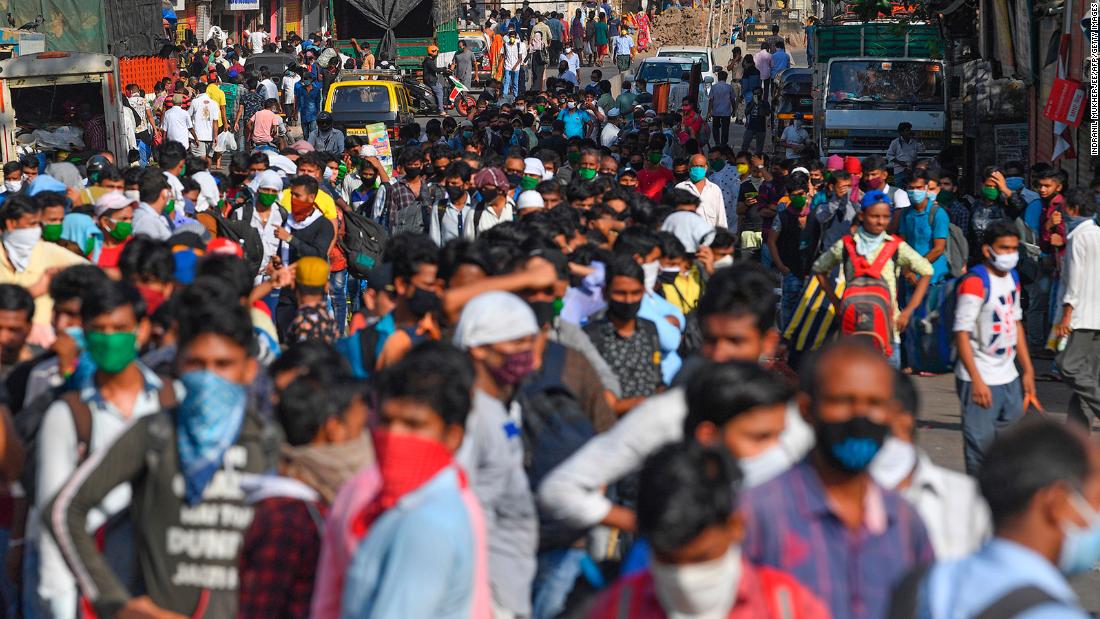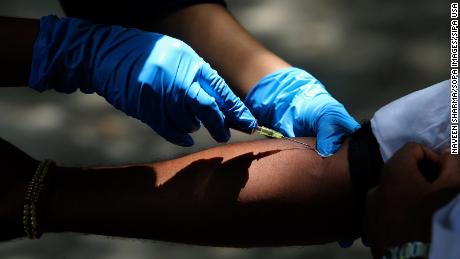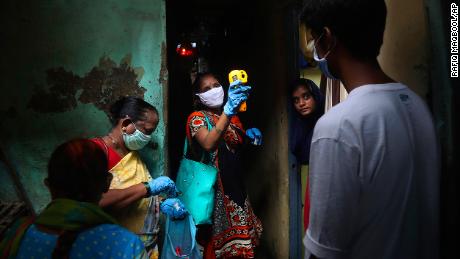The country of 1.3 billion people has reported more than 75,000 infections for five consecutive days — the fastest growing caseload of any country in the world.
At this rate, India’s total number of cases, now at over 3.6 million, is on track to outnumber that of Brazil to become the second highest in the world, behind the US.
But India’s death toll remains relatively low compared to its infection numbers. As of Sunday, India reported 64,469 coronavirus deaths — about half of Brazil’s death toll — with a mortality rate of 1.79%, according to its Health Ministry.
As infections soar, the Indian government has continued to lift lockdown measures. On Saturday, the Ministry of Home Affairs announced India will enter a new phase of reopening on September 1 known as “unlock 4.”
That includes the resumption of the country’s metro rail services in a “graded manner” from September 7, according to the ministry’s statement.
Under the new rules, gatherings of up to 100 people will be permitted at sports, entertainment, cultural, religious and political events outside of hot-spot areas from September 21, with mandatory face-mask wearing and social distancing measures.
Schools and colleges will remain closed until the end of September, although up to 50% of the teaching staff will be allowed to return to campus to teach online courses, and students from Year 9 to 12 can also return on a voluntary basis.
Easing lockdown measures
But the strict lockdown — imposed with little warning or planning — also exacerbated India’s inequality and economic woes. In urban areas, millions of daily wage earners were left without jobs or food — and many made lengthy and sometimes fatal trips home to far away states, often on foot.
Under pressure to resuscitate the battered economy, Modi’s government started to roll back nationwide lockdown measures in May. “Corona will remain part of our lives for a long time, but we cannot allow our lives to be confined only around corona,” Modi said in a national televised address at the time.
Since then, nationwide restrictions have been eased progressively, although some hard-hit parts of the country have enforced their own restrictions. But the number of infections has soared, from just over 180,000 cases on May 30 to hit a million by mid-July.
On July 27, Delhi Chief Minister Arvind Kejriwal said the coronavirus had been “brought under control” in India’s capital, as daily infections dropped to about 1,000 from a peak of nearly 4,000 in late June.
“We now have to focus on the next stage. During Covid people lost their jobs, factories were closed, people faced losses, it became difficult for people to face themselves … Let us now focus on reviving India’s economy,” he said. “Without reimposing the lockdown we have managed to keep things in control … this is essential for improving the economy.”
However, daily infections have increased over the past week, with Delhi on Sunday recording over 2,000 new cases for the first time since July 10.
Skyrocketing cases
After initially appearing to have curbed the spread of the virus, India, the world’s second most populous nation, has struggled to cope with the fast-expanding outbreak.
The Indian health authorities have said that part of the reason for the soaring cases is an increase in testing. As of Saturday, the country has tested more than 41.4 million people, almost doubling the amount of tests conducted by early August.
Yet some experts believe cases are still being underreported. Last month, antibody tests on more than 21,000 people in New Delhi found that nearly one in four residents may have been infected with coronavirus.
So far, more than 2.7 million people have recovered from the virus in India, according to government statistics. Patients with mild and moderate symptoms in India are considered no longer active after 10 days of symptom onset if they meet certain conditions. A test to confirm that they no longer have the virus is not required. Severe cases can only be discharged after one negative coronavirus test.
Modi has pointed to the country’s widespread testing, high recovery rate and low death rates to highlight its success in handling the coronavirus. But others argue the pandemic has revealed the country’s shortcomings in providing widespread accessible basic needs like health care, education, and electricity.
CNN’s Julia Hollingsworth contributed reporting.





